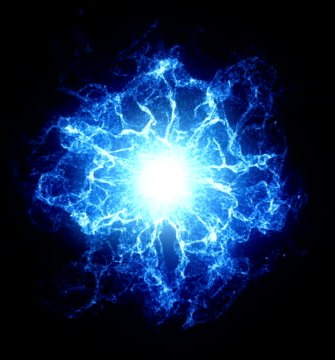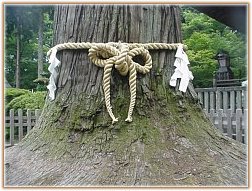 | H Ψυχή... το Εργαστήριο του Κόσμου...
Και ο Νους... ο Αλχημιστής των Πάντων... και η Αλήθεια, οδηγός!
|
 Είθε στους δρόμους της ουσίας σου να πορευθείς και στα μυστικά απόκρυφα αρχεία της ψυχής σου... Είθε στους δρόμους της ουσίας σου να πορευθείς και στα μυστικά απόκρυφα αρχεία της ψυχής σου...  Είναι άπειρες οι κατευθύνσεις στο Άπειρο Σύμπαν… Το ταξίδι μαγικό και ατελείωτο… Έχεις πολλά να χαρτογραφήσεις… Είναι άπειρες οι κατευθύνσεις στο Άπειρο Σύμπαν… Το ταξίδι μαγικό και ατελείωτο… Έχεις πολλά να χαρτογραφήσεις… 
|
|
| | Magatama, Kamidana, O-fuda,shimenawa, Ema, The “OMIKUJI” fortune |  |
| | | Συγγραφέας | Μήνυμα |
|---|
ilia

Ηλικία : 40

Ημερομηνία εγγραφής : 08/03/2011
Αριθμός μηνυμάτων : 1946
 |  Θέμα: Magatama, Kamidana, O-fuda,shimenawa, Ema, The “OMIKUJI” fortune Θέμα: Magatama, Kamidana, O-fuda,shimenawa, Ema, The “OMIKUJI” fortune  Κυρ 27 Μαρ - 17:19:55 Κυρ 27 Μαρ - 17:19:55 | |
| | |
|   | | ilia

Ηλικία : 40

Ημερομηνία εγγραφής : 08/03/2011
Αριθμός μηνυμάτων : 1946
 |  Θέμα: Απ: Magatama, Kamidana, O-fuda,shimenawa, Ema, The “OMIKUJI” fortune Θέμα: Απ: Magatama, Kamidana, O-fuda,shimenawa, Ema, The “OMIKUJI” fortune  Κυρ 27 Μαρ - 17:22:58 Κυρ 27 Μαρ - 17:22:58 | |
| Shimenawa 注連縄Sacred places are typically marked with a shimenawa (special plaited rope) and shime (strips of white paper). Placed at the entrances of holy places to ward off evil spirits, or placed around trees/objects to indicate presence of kami. Made of rice straw or hemp, the rope is called nawa縄 . The pieces of white paper that are cut into strips and hung from these ropes (often hung from ropes on Torii gates as well) are called shime注連 or gohei; they symbolize purity in the Shintō faith. Merchants and businesses, as well as private individuals, often hang the shimenawa on their front doors at special times of the year. One also often sees the Tamagushi 玉ぐし, a sprig of Cleyera orchnacca with attached white-paper-strips (called ”shide”) used by Shintō priests at ceremonies.   Left: Shimenawa hanging from door of sake brewery Imada Shuzo. Right: Shimenawa at Tsurugaoka Hachimangū Shrine in Kamakura Πηγή απο http://www.onmarkproductions.com/html/shrine-guide-2.shtml | |
|   | | ilia

Ηλικία : 40

Ημερομηνία εγγραφής : 08/03/2011
Αριθμός μηνυμάτων : 1946
 |  Θέμα: Απ: Magatama, Kamidana, O-fuda,shimenawa, Ema, The “OMIKUJI” fortune Θέμα: Απ: Magatama, Kamidana, O-fuda,shimenawa, Ema, The “OMIKUJI” fortune  Κυρ 27 Μαρ - 17:24:14 Κυρ 27 Μαρ - 17:24:14 | |
| EMA 絵馬Ema are votive plaques. At most shrines, one finds a stand with hundreds of small wooden plaques attached to it. These votive plaques, sold at the Shrine, are called ema. Worshippers buy the plaque, write their wish on it, then hang it on the ema stand, in hopes the shrine deity will grant their wish. All types of wishes are made -- couples hoping to have children, students hoping to pass school exams, people looking for true love, etc. Πηγή απο http://www.onmarkproductions.com/html/shrine-guide-2.shtml | |
|   | | ilia

Ηλικία : 40

Ημερομηνία εγγραφής : 08/03/2011
Αριθμός μηνυμάτων : 1946
 |  Θέμα: Απ: Magatama, Kamidana, O-fuda,shimenawa, Ema, The “OMIKUJI” fortune Θέμα: Απ: Magatama, Kamidana, O-fuda,shimenawa, Ema, The “OMIKUJI” fortune  Κυρ 27 Μαρ - 17:25:23 Κυρ 27 Μαρ - 17:25:23 | |
| OMIKUJI - GOOD LUCK, BAD LUCK
THE “OMIKUJI” FORTUNE. Most shrines sell fortunes called Omikuji おみくじ. Just look for a small rounded container filled with bamboo sticks at the shrine kiosk. Pay the attendant (typically 100 yen), pick up the container, give it a shake, and a long stick will pop out of a small hole at the top. The stick will have a number, which corresponds to a fortune. Based on your number, the attendant gives you a tiny slip/roll of paper on which is written your fortune. If you draw a good fortune, keep it, take it home with you. But if it’s bad, leave it at the shrine, don’t take it home. Just look around, and you’ll find a small stand with many strips of white paper tied on. These are bad fortunes and you should tie yours here too. The concept is “leave the bad luck at the shrine, were the divine spirit can exorcise it.  Bad-luck fortunes are tied to this rack and left at the shrine Some shrines have done away with the “stick-with-number” tradition, replacing the entire process with automated vending machines. Just pop in 100 yen, and out comes your fortune.  Πηγή απο http://www.onmarkproductions.com/html/shrine-guide-2.shtml Πηγή απο http://www.onmarkproductions.com/html/shrine-guide-2.shtml | |
|   | | ilia

Ηλικία : 40

Ημερομηνία εγγραφής : 08/03/2011
Αριθμός μηνυμάτων : 1946
 |  Θέμα: Απ: Magatama, Kamidana, O-fuda,shimenawa, Ema, The “OMIKUJI” fortune Θέμα: Απ: Magatama, Kamidana, O-fuda,shimenawa, Ema, The “OMIKUJI” fortune  Κυρ 27 Μαρ - 17:28:32 Κυρ 27 Μαρ - 17:28:32 | |
| From Wikipedia, the free encyclopediaJump to: navigation, search Jomon to 8th century magatama Magatama (勾玉 or 曲玉), are curved beads which first appeared in Japan during the Jōmon period. They are often found inhumed in mounded tumulus graves as offerings to deities (see grave goods). They continued to be popular with the ruling elites throughout the Kofun Period of Japan, and are often romanticised as indicative of the Yamato Dynasty of Japan. They are mainly made of jade (翡翠), agate (瑪瑙), quartz (石英), talc (滑石), and jasper (碧玉). [1] Some consider them to be an Imperial symbol, although in fact ownership was widespread throughout all the chieftainships of Kofun Period Japan. It is believed that magatama were popularly worn as jewels for decoration, in addition to their religious meanings. In this latter regard they were later largely replaced by Buddhist prayer beads in the Nara period. In modern Japan, the magatama's shape of a sphere with a flowing tail is a common visual representation of the human spirit ( hitodama). [citation needed] Yasakani no MagatamaThe most important magatama is the Yasakani no Magatama (八尺瓊曲玉, also 八坂瓊曲玉), which is part of the Imperial Regalia of Japan, added some time around the Heian period. The Yasakani no Magatama stands for benevolence, and is one of the three items used in the ceremony of imperial ascension. In Japanese mythology, the jewels, along with the mirror, were hung on the tree outside of Amaterasu's cave (where she had hidden) to lure her out. It is believed to be a necklace composed of jade magatama stones instead of a solitary gem as depicted in popular culture. It is believed to be enshrined in Kokyo, the Japanese Imperial Palace. Origins Necklace of jade magatama from a Japanese burialThe consensus among Japanese archaeologists is that magatama originated in Jōmon Japan before spreading to the Asian continent through the Korean peninsula. It is claimed that the earliest Korean prehistoric magatama date to the Early Mumun (post-850 BC) and are generally found in the southern part of peninsula in proximity to Japan.[2][3][4] Charles Keally, an archaeologist based in Japan who has conducted research on magatama, states: Necklace of jade magatama from a Japanese burialThe consensus among Japanese archaeologists is that magatama originated in Jōmon Japan before spreading to the Asian continent through the Korean peninsula. It is claimed that the earliest Korean prehistoric magatama date to the Early Mumun (post-850 BC) and are generally found in the southern part of peninsula in proximity to Japan.[2][3][4] Charles Keally, an archaeologist based in Japan who has conducted research on magatama, states:
"The magatama's origins are more controversial. These curved jewels of jadeite are common in Kofun Period burials, and they are common also in Korean sites of the same age. But magatama are found in Yayoi sites, too, and unquestionable true magatama are reported also in Jomon sites in Tohoku as early as about 1000 B.C., long before true magatama appeared in Korea."[4]
The magatama is found also on early Korean royal gold crowns and has long been considered a sign of royalty in Korea as well as being a connection with Shamanistic elements. Πηγή απο http://en.wikipedia.org/wiki/Magatama | |
|   | | ilia

Ηλικία : 40

Ημερομηνία εγγραφής : 08/03/2011
Αριθμός μηνυμάτων : 1946
 |  Θέμα: Απ: Magatama, Kamidana, O-fuda,shimenawa, Ema, The “OMIKUJI” fortune Θέμα: Απ: Magatama, Kamidana, O-fuda,shimenawa, Ema, The “OMIKUJI” fortune  Κυρ 27 Μαρ - 17:30:51 Κυρ 27 Μαρ - 17:30:51 | |
| From Wikipedia, the free encyclopediaJump to: navigation, search  A kamidana displaying shimenawa and shide. Kamidana ( Kanji: 神棚 Hiragana: かみだな, literally "spirit ( kami) altar"), is a miniature Shinto shrine found in many Japanese homes. The kamidana is typically placed high on a wall and contains a wide variety of items ( kamizane) related to Shinto-style ceremonies, the most prominent of which is the shintai, most commonly in the form of a small circular mirror, though it may also take the form of a stone ( magatama), jewel, or some other object with largely symbolic value. A similar shrine, when placed at ground-level upon a platform possessing three or four steps, is referred to as a kamidoko. [citation needed] Worship at the kamidana typically consists of the offering of simple prayers, food (e.g., rice, fruit, water) and flowers. Before worshiping at the kamidana it is ritually important for family members to cleanse their hands. Kamidana can also be found in some traditional Japanese martial art dōjō. The word is frequently confused with Kamiza (上座), the seat of a honor in a room or dojo, but without any connection to Shinto. Πηγή απο http://en.wikipedia.org/wiki/Kamidana | |
|   | | ilia

Ηλικία : 40

Ημερομηνία εγγραφής : 08/03/2011
Αριθμός μηνυμάτων : 1946
 |  Θέμα: Απ: Magatama, Kamidana, O-fuda,shimenawa, Ema, The “OMIKUJI” fortune Θέμα: Απ: Magatama, Kamidana, O-fuda,shimenawa, Ema, The “OMIKUJI” fortune  Κυρ 27 Μαρ - 17:32:44 Κυρ 27 Μαρ - 17:32:44 | |
| From Wikipedia, the free encyclopedia
Ōfuda, (御札, a "Great note,") is a gofu (護符) or a talisman issued by a Shinto shrine. It may also be called shinpu (神符). It is made by inscribing the name of a kami and the name of the Shinto shrine or of a representative of the kami on a strip of paper, wood, cloth, or metal.
It is to be renewed yearly, typically before the end of a year, and attached to a door, pillar, or ceiling. It may also be placed inside a private shrine (kamidana). It is believed to protect the family in residence from general harm, such as a disease. A more specific ofuda may be placed near particular objects such as one for kitchen to protect from accidental fire. A popular ofuda called Jingu Taima (神宮大麻) or simply Taima (大麻) is issued by Ise Shrine. It is made from hemp cloth; the use of hemp as a material was common from antiquity.
A portable form of ofuda, commonly called Omamori (お守り) is typically given out wrapped in a small bag made of decorated cloth. This originates from Buddhism, but was subsequently adopted by Shinto. Both Buddhist temples and Shinto shrines give out these omamori. While an ofuda is said to protect a whole family, an omamori offers support for personal benefits.
Πηγή απο http://en.wikipedia.org/wiki/O-fuda | |
|   | | | | Magatama, Kamidana, O-fuda,shimenawa, Ema, The “OMIKUJI” fortune |  |
|
Παρόμοια θέματα |  |
|
| | Δικαιώματα σας στην κατηγορία αυτή | Δεν μπορείτε να απαντήσετε στα Θέματα αυτής της Δ.Συζήτησης
| |
| |
| |
|





 Είθε στους δρόμους της ουσίας σου να πορευθείς και στα μυστικά απόκρυφα αρχεία της ψυχής σου...
Είθε στους δρόμους της ουσίας σου να πορευθείς και στα μυστικά απόκρυφα αρχεία της ψυχής σου...  Είναι άπειρες οι κατευθύνσεις στο Άπειρο Σύμπαν… Το ταξίδι μαγικό και ατελείωτο… Έχεις πολλά να χαρτογραφήσεις…
Είναι άπειρες οι κατευθύνσεις στο Άπειρο Σύμπαν… Το ταξίδι μαγικό και ατελείωτο… Έχεις πολλά να χαρτογραφήσεις… 







